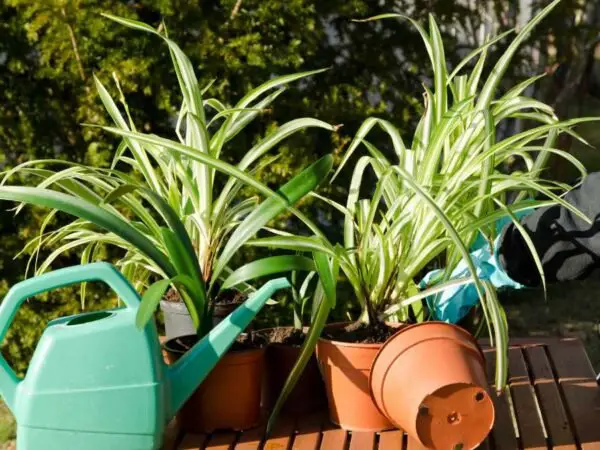Did you know that crape myrtle trees can be propagated easily from cuttings, allowing you to expand your garden without buying new plants? Learning how to propagate crape myrtle is a cost-effective way to multiply your favorite flowering trees and share them with friends and family. With just a few simple steps, you can create new crape myrtle plants that retain the characteristics of the parent tree. In this guide, we will walk you through the process of propagating crape myrtle successfully, from selecting the right cuttings to caring for young plants until they are ready for transplanting.
Understanding Propagation Methods
Cutting Techniques
When propagating crape myrtle, select semi-hardwood cuttings in the growing season. Each cutting should have three to four nodes and multiple leaves for success. Avoid using rooting hormone to ensure proper propagation.
Seed Methods
To propagate using seeds, harvest seed pods in late summer or early fall. Extract the seeds and store them in a cool, dry place. Sow the seeds in spring for optimal germination results.
Root Strategies
For successful root development, choose well-drained soil when planting cuttings. Keep the rooting medium moist throughout the process. Consider outdoor rooting beds with added organic matter for better rooting outcomes.
Preparing for Propagation
Essential Tools
To propagate crape myrtle, you will need sharp pruning shears for taking cuttings. Utilize clear plastic bags to maintain moisture levels and a well-draining potting mix for planting.
Identifying Cutting Areas
When propagating, look for new growth with pliable stems suitable for cuttings. Identify the nodes on the stem where roots will develop and ensure each cutting has enough leaves.
Harvesting Seed Pods
For successful propagation, wait until seed pods turn brown before harvesting them. Collect the pods in a paper bag to prevent seed loss and extract seeds carefully to avoid damage.
Propagating from Cuttings
Propagating crape myrtles from cuttings is a cost-effective and straightforward method to expand your garden. Collecting cuttings early in the morning when the plant is full of moisture enhances their chances of successful rooting. By cutting stems at a 45-degree angle, you create more surface area for roots to develop, promoting healthy growth. Removing excess leaves from the lower part of the cutting helps redirect energy towards root formation.
When it comes to planting cuttings, choose a well-draining rooting medium like perlite or sand to prevent waterlogging. Ensure that the cuttings are inserted deep enough into the soil to cover at least two nodes, which are essential for new root development. Properly spacing out the cuttings prevents overcrowding and allows each cutting to receive adequate sunlight and nutrients for optimal growth.
Caring for new cuttings involves providing them with the right conditions for healthy development. Keep the cuttings in a shaded area initially to protect them from direct sunlight, which can cause wilting. Regularly misting the cuttings helps maintain high humidity levels, crucial for root establishment. Vigilantly monitor the cuttings for any signs of rot or disease, promptly addressing any issues that may arise to ensure their survival.
Propagating from Seeds
When it comes to propagating crape myrtle from seeds, there are specific steps to follow for successful growth.
Sowing Seeds in Spring
To start the process, prepare seed trays filled with well-draining soil to ensure proper aeration and moisture control. Next, sow the seeds at the recommended depth to facilitate germination. It is essential to provide consistent moisture levels to support healthy seedling growth.
Seed-Based Methods
Utilizing seed-based propagation allows for increased genetic diversity within the crape myrtle population. By carefully monitoring the seedlings, you can observe and ensure uniform growth patterns. When it's time to transplant, handle the seedlings with care to prevent any potential root damage.
Ensuring Propagation Success
Watering Needs
Water cuttings sparingly to prevent waterlogged soil. Consistent moisture levels are crucial for seed germination. Adjust watering based on environmental conditions to support healthy growth.
Light Requirements
Place cuttings in indirect sunlight to avoid scorching. Adequate light is essential for seedlings' healthy development. Prevent direct sunlight exposure for new cuttings to thrive.
Pruning for Growth
Prune crape myrtle plants to stimulate branching and denser growth. Removing dead or diseased branches enhances overall plant health. Post-flowering pruning encourages fresh growth cycles.
Fertilizing Plants
Apply balanced fertilizer to young crape myrtle plants for optimal nutrition. Over-fertilizing can lead to nutrient imbalances, so fertilize carefully. Early spring fertilization promotes robust plant growth and blooming.
Managing Challenges
Diseases During Propagation
Fungal diseases can threaten crape myrtle cuttings, especially in humid environments. Adequate ventilation is vital to prevent damping-off. Promptly address any disease symptoms to avoid further spread.
Be vigilant for symptoms of fungal infections such as leaf spots or wilting. Proper airflow helps minimize the risk of disease development during propagation. Swift action is crucial to contain and eliminate any detected diseases.
- Watch for signs of fungal diseases
- Maintain proper ventilation to prevent damping-off
- Treat any disease promptly to prevent spread
Best Practices for Propagation
Best Time to Plant
Fall or winter are ideal for transplanting rooted cuttings to ensure successful propagation. Avoid extreme weather and consider local climate conditions before planting.
Techniques for Success
Regularly monitor the rooting progress of your plants to ensure successful propagation. Provide proper care and maintenance to new plants after propagation. Experiment with various propagation methods for optimal results.
Closing Thoughts
In your journey to propagate crape myrtle, you've learned about various methods, from cuttings to seeds. By understanding the process and following best practices, you can increase your chances of successful propagation. Remember to prepare adequately, manage challenges effectively, and implement the tips shared here to ensure the best results.
Now that you have a solid grasp of crape myrtle propagation, it's time to roll up your sleeves and put your newfound knowledge into action. Take the next step by applying these techniques in your gardening endeavors. Share your experiences with others and continue expanding your skills in plant propagation. Happy gardening!
Frequently Asked Questions
How can I propagate crape myrtle effectively?
To propagate crape myrtle successfully, follow these steps:
- Understanding Propagation Methods: Learn about different methods like cuttings or seeds.
- Preparing for Propagation: Gather necessary tools and materials.
- Propagating from Cuttings or Seeds: Choose the method that suits you best.
- Ensuring Propagation Success: Provide proper care and conditions.
- Managing Challenges: Address any issues promptly.
What are the benefits of propagating crape myrtle from cuttings?
- Cutting propagation ensures genetic similarity to the parent plant.
- It generally produces quicker results compared to seed propagation.
- You can control the quality and health of the new plants more effectively.
- Cuttings allow you to replicate desirable traits in the offspring plants.
When is the best time to propagate crape myrtle from seeds?
The ideal time to propagate crape myrtle from seeds is in late winter or early spring when temperatures are suitable for germination. This timing allows the seeds to establish well before facing harsh weather conditions, promoting successful growth.
How do I ensure successful propagation of crape myrtle from cuttings?
To increase your chances of success when propagating from cuttings:
- Use healthy and disease-free plant material.
- Provide consistent moisture levels without overwatering.
- Place the cuttings in a warm, bright location but avoid direct sunlight.
- Monitor for signs of root development and adjust care as needed.
Are there common challenges I may face when propagating crape myrtle?
e challenges you might encounter during propagation include:
- Root rot due to excessive moisture.
- Failure of cuttings or seeds to root properly.
- Pest infestations affecting young plants.
- Inadequate environmental conditions hindering growth.
What are some best practices for successfully propagating crape myrtle?
Follow these best practices for optimal results in propagating crape myrtle:
- Select healthy parent plants with desirable traits.
- Maintain consistent moisture levels during propagation.
- Provide adequate light without exposing young plants to harsh sunlight.
- Regularly monitor progress and make adjustments as needed for healthy growth.
Image Source: Paid image from CANVA



